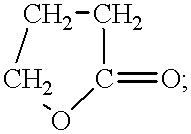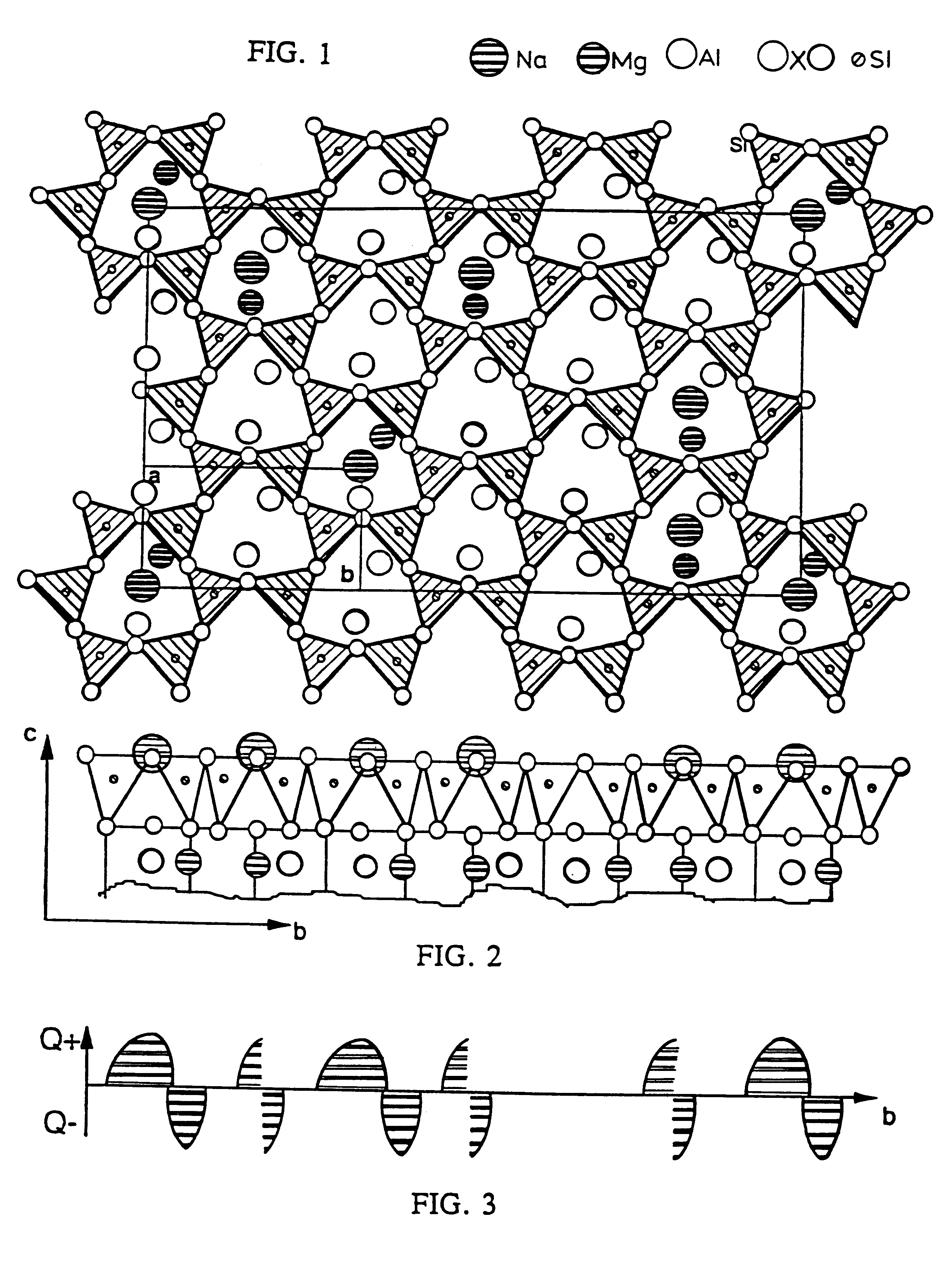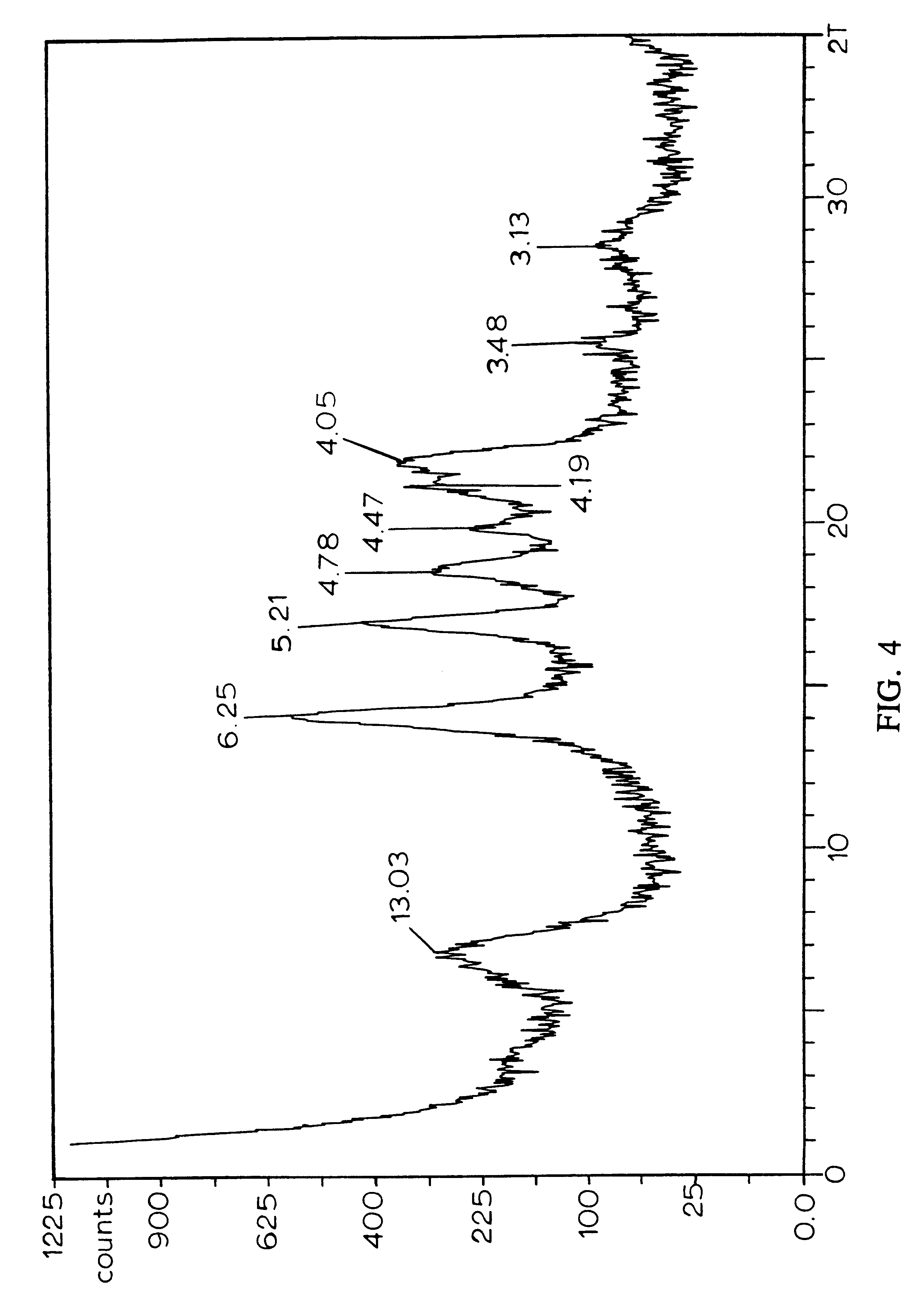Exfoliated layered materials and nanocomposites comprising said exfoliated layered materials having water-insoluble oligomers or polymers adhered thereto
a technology of exfoliated layered materials and nanocomposites, which is applied in the direction of silicon compounds, candle ingredients, other chemical processes, etc., can solve the problems of inability to exfoliate intercalated materials, previous attempts to intercalate water-soluble polymers, such as pvp, polyvinyl alcohol, and little success, so as to increase the energy required for solvent separation
- Summary
- Abstract
- Description
- Claims
- Application Information
AI Technical Summary
Benefits of technology
Problems solved by technology
Method used
Image
Examples
example 1 (fig.4)
EXAMPLE 1 (FIG. 4)
II. Add solvent(s) Compatible with Water
III. Preparation of Polypropylene with Isophorone and Gel A
An x-ray diffraction pattern for the material prepared by this Example 1 is shown in FIG. 4. The width of the base of the peak at 13.03 .ANG. (polypropylene) indicates that the exfoliated clay platelets and tactoids have a mean thickness of 3.9 nm or 39 .ANG., indicating that the exfoliate has a mean number of three platelets with a layer of polymer between each of the pairs of adjacent platelets.
The following examples and associated drawing figures show that the phyllosilicate (sodium bentonite) is exfoliated and remains exfoliated after water removal by contact with water and an organic solvent, (Examples 5 and 6); but the phyllosilicate cannot be exfoliated without water (clay and organic solvent only--Example 4, FIG. 6); that the phyllosilicate can be exfoliated without the organic solvent (water only), but upon dehydration, the exfoliated platelets collapse to th...
example 2-- (figs.5 and 6)
EXAMPLE 2--(FIGS. 5 AND 6)
I. Exfoliating Belle Yellow Sodium Bentonite (Gel A)
A. Add 100 ml of water to a 2000 ml beaker, then using the Caframo mixer with a 2 inch diameter shearing blade, slowly add Belle Yellow (a teaspoonful at a time, appr. 5 g) and 5 g dimethyl sulfoxide (DMSO) to the water while mixing.
B. Adjust mixing speed if necessary to maintain optimal shearing capacity because viscosity will increase as Belle Yellow is incorporated into water and DMSO. The vortex should be about 1 / 3 the way down into the beaker if possible.
C. Allow the mixture to shear for 1 hour until it is completely homogenized.
D. Run an X-ray scan of the gel to ensure exfoliation. (See FIG. 5).
II. Polymer+Nanocomposite
A. Into a large stainless steel container, add dimethyl sulfoxide (DMSO), gel A (Belle Yellow+water), and ethylene vinyl alcohol polymer (EV-OH).
B. Using a hot plate, heat the reactants to 110.degree. C.
C. While the reactants are heating, shear and mix the gel into the polymer via the ...
example 3 (fig.7)
EXAMPLE 3 (FIG. 7)
I. Exfoliating Belle Yellow Sodium Bentonite (Gel A)
A. Add 100 ml of water to a 2000 ml beaker, then using the Caframo mixer with a 2 inch diameter shearing blade, slowly add Belle Yellow (a teaspoonful at a time, appr. 5 g) and 5 g gamma-butyrolactone (GBL) to the water while mixing.
B. Adjust mixing speed if necessary to maintain optimal shearing capacity because viscosity will increase as Belle Yellow being incorporated into water and GBL. The vortex should be about 1 / 3 way down into the beaker if possible.
C. Allow the mixture to shear for 1 hour until it is completely homogenized.
D. Run an X-ray scan of the gel to ensure exfoliation. (See FIG. 2).
II. Polymer+Nanocomposite
A. Into a large stainless steel container, add gamma-butyrolactone (GBL), gel A (Belle Yellow+water), and ethylene vinyl alcohol polymer (EV-OH).
B. Using a hot plate, heat the reactants to 110.degree. C.
C. While the reactants are heating, shear and mix the gel into the polymer via the Coules mix...
PUM
| Property | Measurement | Unit |
|---|---|---|
| Fraction | aaaaa | aaaaa |
| Fraction | aaaaa | aaaaa |
| Fraction | aaaaa | aaaaa |
Abstract
Description
Claims
Application Information
 Login to View More
Login to View More - R&D
- Intellectual Property
- Life Sciences
- Materials
- Tech Scout
- Unparalleled Data Quality
- Higher Quality Content
- 60% Fewer Hallucinations
Browse by: Latest US Patents, China's latest patents, Technical Efficacy Thesaurus, Application Domain, Technology Topic, Popular Technical Reports.
© 2025 PatSnap. All rights reserved.Legal|Privacy policy|Modern Slavery Act Transparency Statement|Sitemap|About US| Contact US: help@patsnap.com



